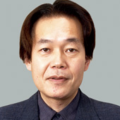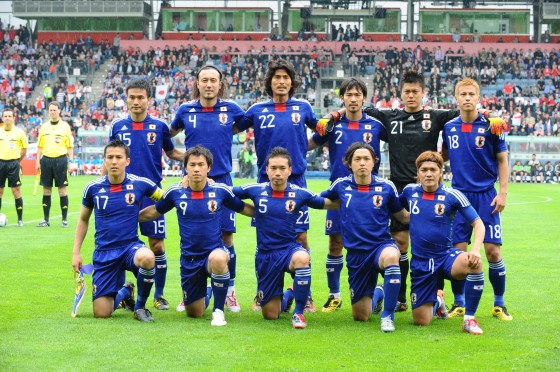Studio Ghibli on a New Journey After Departure of a Giant — Interview with Yonebayashi Hiromasa (Director, Screenwriter)
Simply had to direct another movie
Four years from the release Arrietty, Yonebayashi Hiromasa completed his second directorial work, When Marnie Was There. This work comes from a piece of British children’s literature and is a fantasy story of two girls meeting from a twist of fate. The production of the movie had its genesis when Yonebayashi told producer Suzuki Toshio that he wanted to direct a film.

Yonebayashi Hiromasa
(Director, Screenwriter)
“After finishing Arrietty, I reflected back on what I had done. The work on Arrietty had started with Miyazaki Hayao already providing a script and several concept arts. I felt that I really wanted to be involved in writing the script from scratch. There was another thing though: Arrietty is a story about little people who live by “borrowing” the expense of giants called humans but would leave the mansion and ultimately go to live on their own. During the production, I was so emotionally attached to the little people, feeling that we working at Ghibli were them. Now that we’ve jumped out from the giant called Miyazaki, we can’t seek his help any more. Unable to turn back now, I desperately needed to direct another movie. I had an opportunity to tell all of that to Suzuki-san, who said to me, ‘Then how about this?’ and handed me the novel, When Marnie Was There.”
Yonebayashi read the novel and found it exciting, but felt that it was a difficult work to make into a feature animated film.
“Frankly, I didn’t know what to do when it all began. But I went ahead and drafted several concept drawings based on the illustrations in the original novel, to provide some ideas as to how we would turn it into an animation. What I knew I had to draw was the presence of the mysterious Marnie whom heroine Anna meets, and the image of the marsh where the story takes place. I felt that if I could draw these elements with great appeal, the movie would become exciting.”
He says that Suzuki had suggested setting the story in Japan.
“I was immediately convinced that it should be set in modern Japan if we are showing it to a Japanese audience. But I believed that Marnie should be a blond-haired girl as in the original novel. So where should it be set? The original story unfolds under slightly cloudy ‘pearl grey’ skies, which is a scenic portrayal of Anna’s emotions. Thinking where such a sky may be, I recalled the skies of eastern Hokkaido. I realized that if we set the stage on the Hokkaido marsh and drew it in a way that expresses the slightly cool air, we would have the perfect setting for this story.”
Advanced techniques to portray the air of the story
The creative team toured Kushiro, Nemuro, Akkeshi and other Hokkaido towns to expand their imagination and develop the seaside village where the story would be set. Yonebayashi says that advice from art director Taneda Yohei, who knows much about great filming locations, proved helpful. Suzuki was the one who suggested that Taneda and supervising animator Ando Masashi join the team.
“Suzuki-san proposed this novel, coordinated Taneda-san and Ando-san, and then turned the producer role over to Nishimura Yoshiaki. From there on, I discussed and worked with Nishimura-san every day, from writing the script to finishing the storyboard. The film stars a twelve-year-old girl called Anna. She is right around the beginning of adolescence. Anna is extremely self-conscious in the beginning; she sees that the world is made of inner and outer sides of a circle, and although she’s on the outer side, she doesn’t care. But she in fact wants someone to help her. I wanted to portray those murky, painful emotions that this particular age group characteristically feels. In that sense, Ando-san is really good at drawing characters with such raw emotions. And with the original novel titled, When Marnie Was There, we had to portray the air that Marnie is right there. She’s what Anna only sees — a mysterious being like Totoro of My Neighbor Totoro. Well, Totoro could simply stand right there to portray the air of its story, but the sense of Marnie already being there without anyone knowing it needs to be portrayed by the warmth of the hand when it touches or with the intervals between dialogue, and requires advanced animation techniques. That was when I really felt the significance of Ando-san’s capabilities.”
Let’s look at an example of how delicate this expression is.
“A sound is heard from The Marsh House where Marnie lives, and Anna and Marnie hide behind a tree. Anna had been stern and had always maintained a distance from other people, but for the first time here, she sticks closely to a girl of her same age. Marnie puts her hand around Anna’s waist and draws her near, which is where we see Anna’s throbbing emotions. In a way, it’s sensual. The women that Miyazaki Hayao portrays are sensual as well, but they are either motherly women or the ideal girl-child. I felt that Anna needed to be a character that viewers would see at a more real-to-life level. She first appears as an ‘ordinary’ girl with a stern heart, but it was this ‘ordinary’ look that we had a difficult time drawing. She gradually opens up as she meets and communicates with Marnie, but when Anna confesses of her psychological problems, she learns that Marnie was rather the one that was carrying sadness, to which Anna expresses anger. A girl who had never shown emotion goes on to display all kinds of emotions, and the one who was always led by Marnie now wishes to help her. I wanted to portray that change in a girl’s emotion. It’s only a very small change – to the mere extent of a girl who was unable to talk eye-to-eye finally getting to talk. But it was a truly huge change for Anna, and I wanted to portray that process delicately.”
Expressionistic backgrounds that reflect Anna’s emotions
Marnie, to Anna, is “a person in her dreams; a friend that her inner self had called for,” says Yonebayashi. In other words, Anna’s psychological state affects the presence of Marnie. This is expressed in the utterly beautiful and memorable depiction of nature in the backgrounds of when the two meet.
“I had requested the background artists to make the backgrounds look more wonderful whenever Anna and Marnie are together. This is because Marnie, who is Anna’s friend of her dreams, would and should only appear in a wonderful setting. I felt that it would be a scene that Anna would want to see. That’s why when the two are on a boat on a sea at night, the moon shines beautifully and there are no townscape lights in the background. But after that, when Anna heads home alone, we see the lamppost lights and real life. The post office that she passes on her way home takes on quite lonesome colors, which is completely different from when the two are together. We had put quite an effort into drawing the artwork for the scenes where Anna and Marnie are together. In that sense, the background artwork is sheer expressionism that reflects Anna’s emotions. That’s why the movie starts out with cloudy skies and ends in blue.”
This is the first Ghibli movie that doesn’t feature the names of Takahata Isao and Miyazaki Hayao in its credits. Since Miyazaki announced his retirement from directing feature animations last year, people were paying careful attention to how Ghibli would run itself. How had Yonebayashi handled that pressure?
“When I heard the news of his retirement, I thought it was very serious and felt some anxiety. But in directing this movie, I didn’t think of how Ghibli would go from here or what Miyazaki-san would think of this film. When I had worked on Arrietty I worried about how Miyazaki-san would see it, and that was another thing I ended up regretting. I wanted to make this one solely for the audience. The Wind Rises that I also worked on was an animation film that had targeted adults, but I went back to thinking that I wanted to make one that the children would love to see. During the production, I was hoping to turn it into something that children in their adolescence – as Anna and Marnie are – would closely relate to, but I think it has finished into a movie that viewers already past their adolescence would also want to see.”
Having put everything he had into the work, Yonebayashi says he’s really not in a position to think about the future. How would an audience respond to the movie of a dwarf who embarked from a giant called Ghibli? We look forward to seeing it.
Translated from “Kyojin no motokara funadeshita Ghibli — Yonebayashi Masahiro (Director, Screenwriter) intabyu (Studio Ghibli on a New Journey After Departure of a Giant — Interview with Yonebayashi Hiromasa (Director, Screenwriter)),” Kinema Junpo, pp46-48. (Courtesy of Kinema-Junposha Co. Ltd.) [August 2014]


